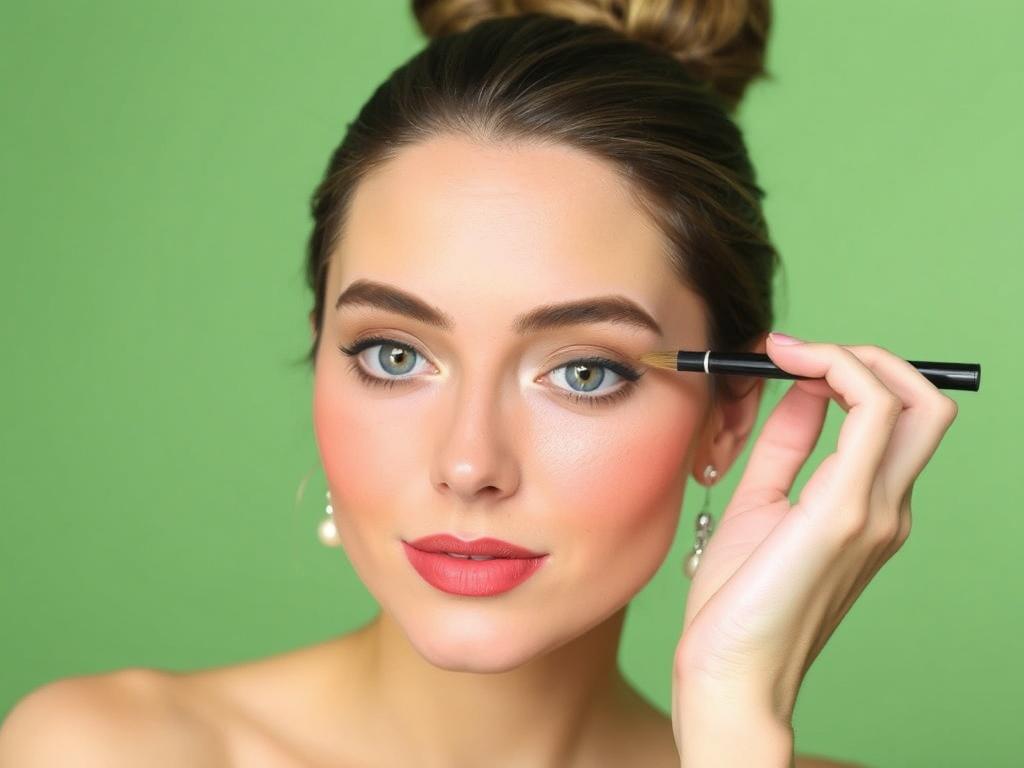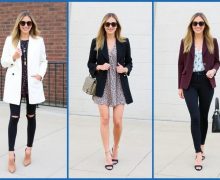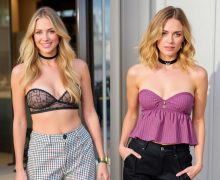SQLITE NOT INSTALLED
Welcome—grab a mirror and a cup of tea, because we are about to explore two of the most talked-about makeup techniques: bronzing and contouring. Whether you’re a curious beginner or someone who already reaches for a brush every morning, this long-form guide will walk you through the what, why, and how of each method. We’ll compare them, offer practical step-by-step instructions, suggest tools and products, and reveal the subtle art of choosing the right shades for your skin tone. By the end, you’ll feel confident saying “Domina las Técnicas” not just in spirit but in practice.
This article is written in a conversational style, meant to be easy to follow. You’ll find tables that compare products and tools, lists of do’s and don’ts, and clear routines for different face shapes and skin types. I encourage you to read in chunks, try a few techniques as you go, and adapt them to your unique features. Bronzing vs. contouring is less about a strict rulebook and more about learning to highlight, sculpt, and set the mood you want on your face. Let’s start by unpacking what each technique truly is.
What Is Bronzing?
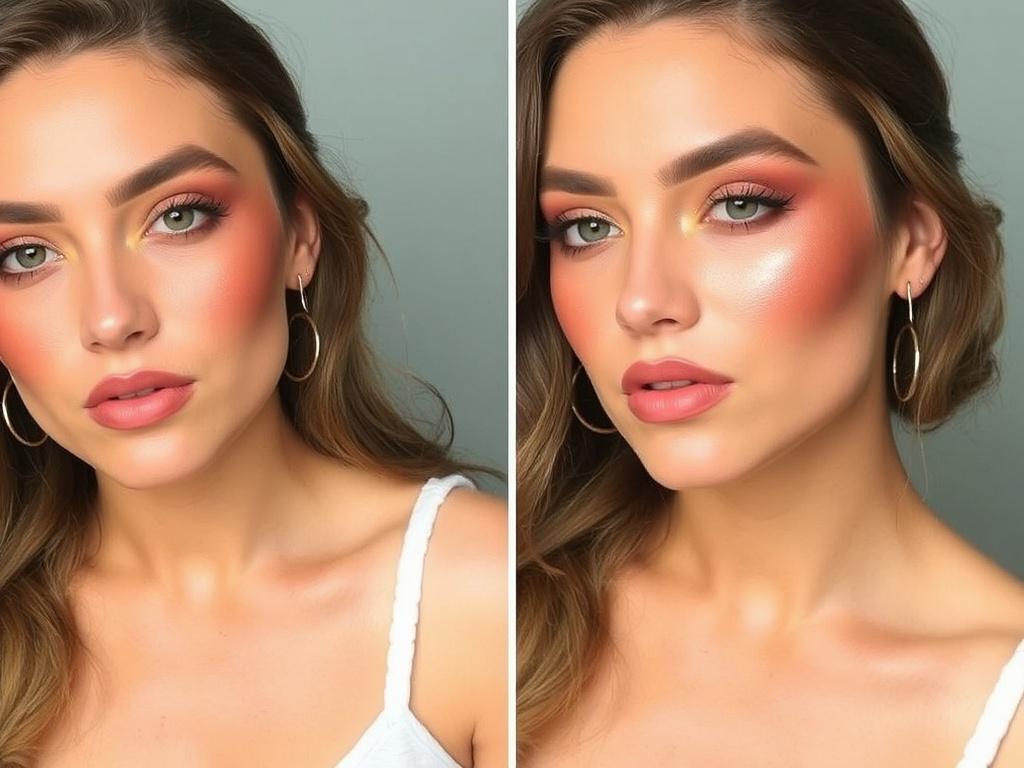
Bronzing is the warm, sun-kissed glow that mimics natural tan and radiance. A bronzer is used to add warmth to the skin—think of the overall warmth you get after a few hours in the sun, not heavy shadows or sharp lines. Bronzing aims to bring a healthy, lit-from-within look that’s universally flattering when applied correctly. It can be soft and subtle or intense depending on your preference and the product’s finish.
Bronzing usually focuses on the high points of the face where sunlight would naturally hit: the forehead, the tops of the cheekbones, bridge of the nose, and sometimes the jawline. Unlike contouring, bronzing is about warmth rather than creating depth or illusions. Bronzing blends with your natural skin tone to enhance complexion and dimension, but it does so with warmer, often golden or peachy tones that read as sunlit color rather than shadow.
Many people find bronzing more forgiving than contouring because it works with your face rather than against it. If you’re new to makeup and want to add life to your complexion without worrying about perfect sculpting, bronzing is a great place to start. It’s also a building block—bronze can be layered lightly with blush and highlighter to create a cohesive, natural-looking face color.
History and Inspiration Behind Bronzing
Bronzing has roots in the desire to appear healthy and sun-kissed, long before modern beauty brands put bronzers on glossy shelves. Natural sunlight has always been associated with vitality; historically, cultures have used oils, pigments, and powders to capture that radiant look. The modern makeup room adopted bronzing in the mid-20th century as sunless tanning and cosmetic bronzers matured.
In contemporary beauty, bronzing took off again with the rise of natural beauty trends and the influence of travel photography and social media. The idea of looking like you’ve just enjoyed an outdoor day—or a beach holiday—appealed to both subtle minimalists and glam lovers. As formulas evolved, bronzers began to arrive in powders, creams, and liquids suitable for different finishes and skin types.
Products Commonly Used for Bronzing
Bronzers come in different formats, each with its advantages. Powder bronzers are the most common, especially for oily and combination skin types. Cream bronzers provide a dewier finish and are beloved by those with dry or mature skin. Liquid bronzers are great for a very natural “stained” look and can be mixed into foundation or moisturizer. Each formula behaves differently under light and in photos, so choosing the right product matters.
Below is a simple table to help you compare common bronzer formats and their best uses. This can save you trial-and-error time and steers you toward the type that suits your skin type and desired finish.
| Format | Finish | Best For | Pros | Cons |
|---|---|---|---|---|
| Powder Bronzer | Matte to satin | Oily, combination, normal | Easy to blend, buildable, long-lasting | Can look cakey on dry skin if over-applied |
| Cream Bronzer | Dewy to satin | Dry, mature skin | Natural finish, blends with skin, hydrating | May slide on oily skin without setting |
| Liquid Bronzer | Natural stained glow | All skin types (dependent on formula) | Easy to mix into foundation, buildable sheerness | Can be tricky to blend out if too pigmented |
| Bronzing Stick | Sheer to satin | Travel, quick touch-ups | Convenient, easy to target | Can look stripey without proper blending |
What Is Contouring?
Contouring is the technique of creating shadows and depth to shape and define the face. While bronzing adds warmth, contouring sculpts with cooler, deeper shades that mimic natural shadows. The idea is visual trickery: applying darker pigments to areas you want to recede (like under cheekbones or the sides of the nose) and lighter pigments or highlights to areas you want to bring forward (like the cheekbones or the center of the face).
Contouring can be subtle and realistic or dramatic and editorial. The modern contouring movement owes much to makeup artists and celebrities who popularized sharp, sculpted looks for photography and red carpets. Today, techniques range from very soft, natural contouring to the intense, chiseled contour lines used in high-fashion makeup.
One key difference between contouring and bronzing is color temperature: contoured areas typically use cool-toned pigments to simulate shadows, while bronzers use warm tones. Contouring requires more precision, so a steadier hand and familiarity with brushes and products are helpful. It often involves layering—starting soft and building intensity where needed.
The Evolution of Contouring
Contouring traces its roots back to stage and film makeup, where artists used heavy colors and exaggerated lines to shape features under hot lights. With photography and film development, makeup had to adapt. As beauty culture moved online and tutorials became widespread, contouring techniques democratized. Social media in the early 2010s made dramatic contouring a global trend, and brands curated contour kits in response. Over time, trends shifted toward softer, more wearable contouring as people sought natural-looking results for everyday wear.
While social media brought contouring into the hands of many, professionals have always emphasized tailoring the technique to individual face shapes, skin texture, and context (e.g., daily life vs. photography). This means the best contouring is the one that complements your features without feeling like a mask—something that enhances your natural structure rather than overpowering it.
Products Used for Contouring
Just like bronzing, contouring products come in powders, creams, and sticks—but the formula choices should skew toward cooler tones. For powders, look for shades without too much warmth or orange undertone. Cream contours often sit better on dry and mature skin because they move with the skin. Liquid contours can be precise and blend smoothly when applied with a sponge.
Below is a simple table to help you compare typical contour product formats and when to use them. This will help you pick the right texture for the finish you want and the skin you have.
| Format | Finish | Best For | Pros | Cons |
|---|---|---|---|---|
| Powder Contour | Matte | Oily/combination skin, long wear | Easy to blend and build, photo-friendly | Can appear dusty if over-applied |
| Cream Contour | Natural/skin-like | Dry, mature skin | Sits well on skin, looks natural | Needs setting for oilier skin types |
| Liquid Contour | Soft-matte | All skin types (depends on formula) | Precise, great for subtle sculpting | Must blend quickly; can streak if rushed |
| Contour Stick | Matte to satin | Quick sculpting | Convenient and portable | Needs good blending tools to avoid lines |
Bronzing vs. Contouring: Key Differences
Bronzing and contouring are often discussed together because they’re both ways to manipulate light and shadow on the face, but they aren’t interchangeable. Bronzing is about warmth, overall glow, and color. Contouring is about structure, depth, and the illusion of changed dimensions. Understanding the difference is the first step to mastering both.
Here’s a quick mental shorthand: bronzing = warmth, contouring = shape. Consider bronzing as adding friendly light; contouring is creating intentional shade. When used together, they can complement each other beautifully. But using the wrong tone in the wrong area—such as a warm bronzer to create a shadow—can flatten the face or produce orange, muddy results. Precision in tone and placement is what separates a natural look from a heavy-handed one.
Direct Comparison: Bronzing vs Contouring
Below is a simple list comparing the primary goals and effects of bronzing and contouring. This helps clarify when you might choose one technique over the other or when blending both makes the most sense.
- Purpose: Bronzing adds warmth; contouring sculpts and defines.
- Tone: Bronzing uses warm, golden, peachy tones; contouring uses cool, taupe, or neutral shades.
- Placement: Bronzing is applied where light naturally hits; contouring is applied where shadows would naturally fall.
- Intensity: Bronzing is typically softer and more forgiving; contouring requires more precision and building up.
- Best for: Bronzing enhances complexion; contouring alters perceived bone structure.
Remember, these are guiding principles, not hard rules. Some makeup artists mix bronzing and contouring into the same product, and personal tastes vary. The critical takeaway is to be conscious of tone, placement, and intensity.
When to Use Bronzer vs. Contour
Knowing when to apply bronzer or contour comes down to context and the look you want. If your aim is a daily, fresh-faced glow, reach for bronzer. For special occasions or photography where you want more definition, add contour. You can also use both—bronzer to warm and contour to sculpt—but be mindful of undertones so you don’t create unnatural color contrasts.
Here are practical scenarios to help you choose:
- Everyday Natural Look: Use bronzer lightly across the high points of your face. Skip intense contour lines. The goal is brightness and warmth.
- Glam Night Out: Combine both—contour to define cheekbones and jaw, bronzer to warm the face, then highlight for a three-dimensional finish.
- Photography/Video: Use contour to shape the face for camera and bronzer to prevent you from looking washed out. Set with powder to avoid shine in photos.
- Summer or Tan: Bronzer can sometimes double as contour if you use a slightly deeper warm shade strategically, but avoid orange tones.
As a rule of thumb, start with less product than you think you need; you can always build, but it’s hard to remove excess without breaking down the base makeup. Light layers and blending make both techniques look modern and wearable.
Face Shape Guide: Where to Apply Each
Different face shapes benefit from specific placement for contour and bronze. Adapting technique to your natural bone structure helps you enhance features without forcing a one-size-fits-all approach. Below is a table summarizing common face shapes with simple placement tips for bronzing and contouring.
| Face Shape | Bronzing Placement | Contouring Placement | Goal |
|---|---|---|---|
| Oval | Forehead edge, cheek tops, nose bridge | Light under cheek hollows, jawline if needed | Enhance natural balance |
| Round | Perimeter of face, temples, cheek tops | Define under cheek hollows and alongside jawline | Create the illusion of length and definition |
| Square | T-zone lightly, tops of cheekbones | Soften the angles: under cheeks and along jawline | Soften strong jaw and add curves |
| Heart | Forehead edges, cheekbones | Under cheeks, slimming the forehead corners if necessary | Balance wider forehead with chin |
| Long/Oblong | Forehead edges and cheek tops | Contour along hairline and under chin | Shorten perceived length, add width |
Step-by-Step Techniques for Bronzing and Contouring
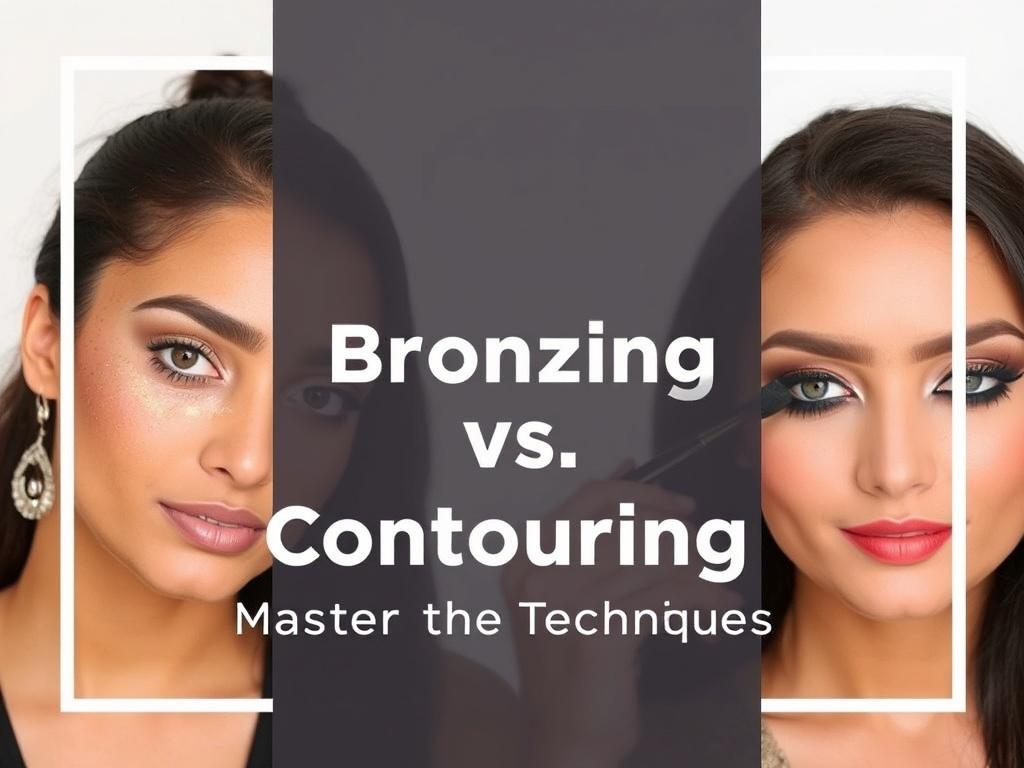
Here we’ll walk through step-by-step rituals for both techniques. These are flexible, friendly instructions—think of them as recipes you can tweak. I suggest practicing without a time limit the first few times so you can learn how product behaves on your skin.
We’ll start with basic bronzing, then move to contouring, and finish with a combined routine for a polished look. Each section includes tool recommendations and blending tips because blending is the secret sauce that separates a natural finish from makeup that looks like makeup.
Bronzing: A Simple Step-by-Step Routine
Step 1: Prep your skin. Cleanse, moisturize, and apply sunscreen if you’ll be outdoors. For longer wear, use a light primer suited to your skin type. A glowy primer pairs nicely with cream or liquid bronzers; a mattifying primer works well under powder bronzers for oily skin.
Step 2: Apply base makeup. Use foundation or tinted moisturizer. Bronzer looks best when applied over a thin, even layer of base so that the warmth sits on the surface of your skin without being patchy. If you use heavy foundation, make sure it’s well-blended before bronzing.
Step 3: Choose the right brush or tool: a fluffy bronzer brush for powder, a stippling brush or fingers for cream, or a damp sponge for liquid. Tap off excess product for powder application to avoid over-depositing pigment.
Step 4: Apply strategically. Sweep bronzer where the sun hits: forehead just along the hairline, tops of cheekbones, bridge of nose, and a bit on the chin. Keep strokes soft and blended. Build slowly—start with a light hand and add where needed. If you like a sculpted look, apply slightly under the cheekbones as well but use a warmer, sheerer layer than you would for contour.
Step 5: Blend, blend, blend. Movement matters—use circular motions for powder and buffing motions for creams. The goal is to eliminate edges so the color melts into your skin. A final pass with a clean brush or sponge can soften any overstated areas.
Step 6: Set if necessary. If you used creams or liquids and have oily skin, lightly set the T-zone and bronzed areas with a translucent powder to prevent slip. Finish with a touch of highlighter on the cheekbones and inner corners of the eyes for dimension.
Contouring: A Step-by-Step Routine
Step 1: Prep and prime. Similar to bronzing, start with clean, moisturized skin. Primer can smooth pores and help pigments blend evenly. If you plan on heavy contour for photography, choose a primer that reduces shine.
Step 2: Apply the base. Contour works best on a skin-like surface, so apply foundation or a light layer of foundation and concealer as needed. If you use concealer to brighten under the eyes or the center of the face, do that before contouring to create contrast.
Step 3: Select your contour shade. Choose one or two shades cooler than your foundation. For a natural tractable look, pick a shade that reads like shadow rather than a brown tone that reads orange. Test on your jawline or cheek and blend a little to ensure it looks like depth and not just color.
Step 4: Map your contour. Use a contour product to draw faint lines where shadows fall: under the cheekbones (suck your cheeks in to find the hollow), along the sides of the nose for slimming, under the jawline for definition, and slightly on the temples or hairline if you want a structured forehead. Less is more—apply thin, strategic lines.
Step 5: Blend the contour. Use a dense brush or damp sponge for cream/liquid formulas, and a tapered powder brush for powders. Blend in upward strokes to mimic natural shadows. For the cheek area, blend slightly upward to lift rather than drag it downward. The contour should disappear into the skin—no hard lines.
Step 6: Add highlight and adjust. Use a light concealer or highlighter on the tops of cheekbones, center of the nose, brow bone, and cupid’s bow. The interplay of light and shadow creates the sculpted effect. If needed, add a touch of bronzer to warm the face so it doesn’t look too flat or ashy from cooler contour tones.
Step 7: Set and finish. For powders, set with a translucent powder. For cream contours, a light dusting of setting powder will help longevity. Finish with a spray if you plan on being photographed or out in hot weather; it ensures the layers look skin-like rather than powdery.
Combined Routine: Bronze + Contour for a Polished Look
When combining bronzing and contouring, sequence matters. A simple and effective order is: base makeup -> contour -> blend -> bronzer -> highlight -> set. Doing contour first lets you place cooler shadows where you want depth, then bronzer warms the complexion and unifies the face. Highlight is added last to pop the lift points.
Start with a subtle contour—remember it’s easier to build than to subtract. Once the contour is blended, sweep a bronzer that complements your contour tone (usually slightly warmer) across the high planes to add life. Blend the edges where the two meet so they read as one cohesive finish. This method yields definition without a compartmentalized appearance.
Tools and Brushes: What You Actually Need
Having the right tools makes the process faster and more forgiving. While high-end brushes can be a joy to use, you can achieve excellent results with a few well-chosen, affordable tools. Below is a list of essentials and optional extras, with short descriptions, so you can assemble a functional kit without clutter.
- Fluffy Bronzer Brush: Large, dome-shaped brush for diffused powder bronzer application.
- Tapered Contour Brush: Smaller and more defined than a bronzer brush; perfect for powder contour in hollows.
- Dense Cream Brush or Sponge: For blending cream or liquid contour and bronzer seamlessly into the skin.
- Flat Foundation Brush or Sponge: To apply and blend base foundation for an even canvas.
- Small Precision Brush: For nose contouring and detail work.
- Fan or Small Highlighter Brush: To dust on highlighter without disturbing other layers.
- Blending Brush: Multi-purpose for softening any harsh lines.
Pro tip: Clean your brushes regularly. Residual product buildup can change color payoff, create patchy application, and harbor bacteria. A quick weekly wash with gentle brush cleaner or baby shampoo keeps them soft and functional.
Common Mistakes and How to Avoid Them
Even experienced makeup lovers can fall into a few recurring pitfalls. These mistakes often stem from rushing, poor shade choice, or lack of blending. The good news is that most can be avoided with small adjustments to technique.
Here are the most common mistakes and how to fix them:
- Using a Bronzer That’s Too Orange: Choose bronzers with golden or neutral undertones. Test in daylight before purchase.
- Contouring with Too-Deep or Warm Colors: Shadows look most natural when slightly cool or neutral. Avoid overly brown or orange shades for contouring.
- Heavy-Handed Application: Always build color slowly. Tap off excess product and apply in layers.
- Poor Blending: Use the right brush and blending motions. Circular and buffing movements help melt product into the skin.
- Ignoring Face Shape: Random placement can flatten features. Learn your face shape and plan placement accordingly.
- Skipping Primer or Setting: Especially for cream products, a primer and setting powder/spray improve longevity.
- Not Considering Lighting: Different lights change how colors read. Try makeup in natural light before leaving the house.
Fixing these mistakes is usually as simple as switching to better-suited shades, correcting the application tool, and practicing patient blending. Make-up is forgiving: soft edges and buildability are your allies.
Adapting Bronzing and Contouring by Skin Tone
Choosing the right shades for bronzing and contouring is pivotal. The same product can read subtly different depending on your undertone and depth of skin. The key is finding colors that look like natural warmth or natural shadow for your complexion.
Below is a practical guide to selecting bronzer and contour shades by skin tone and undertone. Use it as a starting point, and always test where you’ll apply the product before buying if possible.
| Skin Tone | Bronzer Shade Suggestions | Contour Shade Suggestions | Undertone Tips |
|---|---|---|---|
| Fair | Light peach, soft golden tones | Light taupe, cool beige | Avoid very dark or orange bronzers; soft and sheer is best |
| Light to Medium | Warm golds, soft caramel | Neutral to cool taupes | Balance warm bronzer with cooler contour to avoid mud |
| Medium | Warm caramel, golden bronze | Deep taupe, soft brown | Look for versatile warm bronzers that don’t read orange |
| Tan | Rich golden bronze, warm chestnut | Deep cool brown, espresso | Cooler contour shades give realistic depth; bronzers can be richer |
| Deep | Deep bronze, mahogany with golden flecks | Rich espresso, deep neutral browns | Choose bronzers and contours with depth; avoid ashy finishes |
Note: Undertones (cool, neutral, warm) affect how colors read. If you have cool undertones, lean slightly cooler in contour shades. If you have warm undertones, allow bronzer to enhance that warmth while choosing a neutral contour to create believable depth. If you’re neutral undertone, you have more flexibility to pair warm bronzers with neutral contours.
Special Considerations for Mature, Acne-Prone, and Oily Skin
Skin texture and concerns affect how bronzers and contours sit on the skin. For mature skin, creamy textures are often more flattering because they hydrate and avoid emphasizing fine lines. Use a light-reflecting product in moderation—and avoid shimmery bronzers on areas you don’t want to highlight (like fine-line-prone regions).
For acne-prone or textured skin, powder products can be more forgiving, especially when used sparingly. Use a soft, diffused brush to avoid disturbing skin. If you have oily skin, set cream or liquid products with a light touch of powder in oily areas to prevent movement and patchiness. Balancing longevity with a natural finish is the core of these adjustments.
Makeup Routines for Different Looks
Bronzing and contouring change depending on whether you’re aiming for a natural everyday routine or a full glam look. Below are three approachable routines: natural daytime, polished office/work, and evening glam. Each routine includes quick steps and product recommendations for different levels of commitment.
Daily Natural Look
Step 1: Lightweight tinted moisturizer or serum foundation.
Step 2: Light sweep of a soft, matte bronzer across the forehead, cheek tops, and nose bridge.
Step 3: Minimal blush on apple of the cheeks; blend into bronzer for cohesion.
Step 4: Tiny dot of highlighter on cheekbones. Finish with lip balm and minimal mascara. Keep everything soft and barely there.
Polished Office/Work Look
Step 1: Medium-coverage foundation for even skin tone.
Step 2: Subtle contour under the cheekbones and along the jaw; blend well.
Step 3: Bronzer across forehead and cheeks to warm the face. Add structured brows and neutral eye shadow for polish.
Step 4: Finish with a natural lip shade and light setting spray for all-day wear.
Evening Glam
Step 1: Full-coverage foundation if you prefer, and stronger concealer where needed.
Step 2: Intense contouring under cheekbones, sides of nose, and jawline for camera-ready definition.
Step 3: Rich bronzer across cheeks and temples. Add shimmering highlight on cheekbones and inner corner of the eyes.
Step 4: Bold eye or lip to match the look. Set with a long-lasting setting spray to lock in glam for the night.
Layering Makeup: Bronzers, Contours, Blush, and Highlight
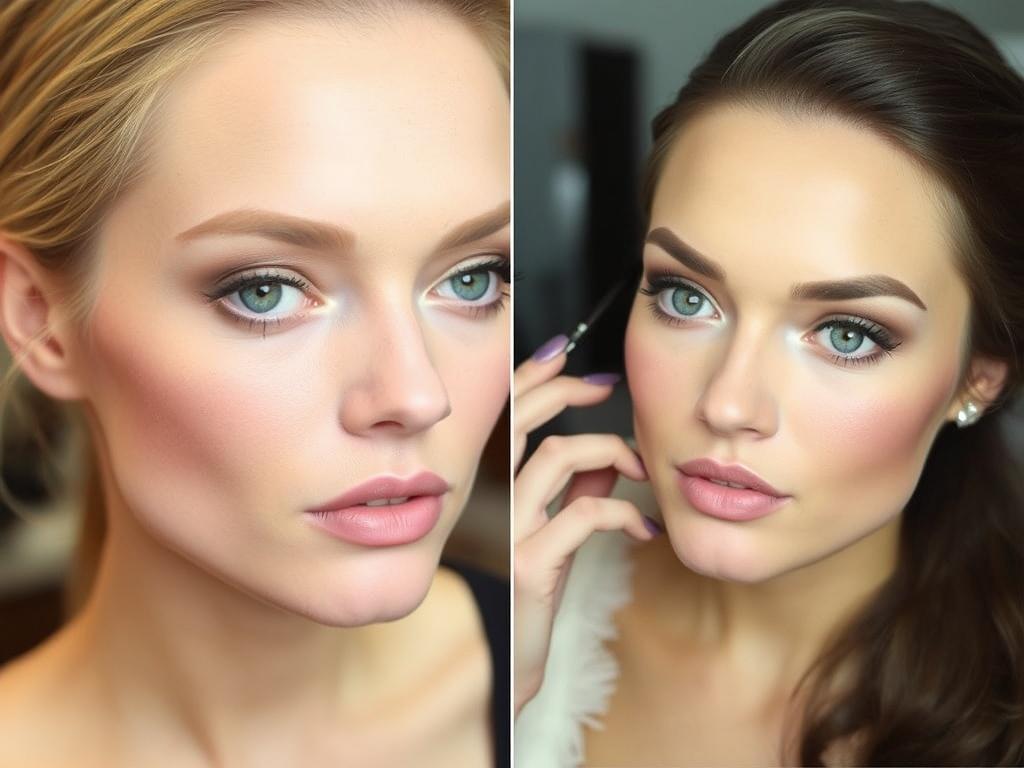
Layering is where artistic control really shows. Think of bronzer, contour, blush, and highlight as a symphony: each plays its role and should harmonize. Too much of one element can drown out the rest. A balanced approach keeps the face dimensional and natural.
A common sequence is contour -> foundation (if doing highlighting spots first) -> bronzer -> blush -> highlight. However, many artists prefer base -> contour -> blend -> bronzer -> blush -> highlight because it allows the contour to set the structure and the bronzer to unify color.
When you layer, use tools that help you blend without removing underlying products. A clean fluffy brush can buff products together; a damp sponge can press cream and liquid layers into the skin for a polished finish. The goal is seamless transitions between elements to create a cohesive face canvas.
Removal and Skincare: Prepping and Resetting Skin
Good makeup starts with healthy skin and ends with responsible removal. Always remove your makeup at night to avoid clogged pores, inflammation, and premature aging. Use an oil-based cleanser first to break down heavier cream or waterproof products; follow with a gentle foaming or gel cleanser to remove residue.
After cleansing, apply a hydrating toner or essence, then a serum and moisturizer suited to your skin’s needs. If you used heavy makeup for an event, consider a hydrating mask the next morning. Sunscreen is essential if you’re reapplying makeup for the day—bronzer and contour enhance features but do not protect skin from UV.
Skincare tip: Exfoliate regularly but gently to maintain smooth skin texture, making bronzing and contouring sit more evenly. With consistent care, your makeup routine becomes easier and more flattering over time.
Professional Tips and Tricks
Here are some pro-level tips that makeup artists use in studios and on sets. They’re practical for real life and surprisingly simple once you know them.
- Neutralize before contouring: If your skin is very warm, lightly dust a neutral powder in the areas you’ll contour. This can prevent warm tones from turning orange when you add shadow.
- Use multiple textures: A cream contour under a powder bronzer can create natural depth. The cream anchors the shadow while the powder adds longevity and blends the overall color.
- Blot before powdering: If you have oily skin, blot excess oil with blotting paper before applying powder to avoid moving underlying cream contours.
- Color correct subtly: If you have redness or hyperpigmentation, color correct lightly under foundation to ensure your bronzer and contour read true and don’t need compensatory over-application.
- Map with a light hand: Mark areas lightly with a neutral pencil or a faint line of product before you blend. This is especially useful when practicing new placements.
These professional habits help makeup last longer and look better in different lights. It’s worth practicing them until they feel natural in your own routine.
Product Recommendations: Budget to Splurge
Choosing products can be overwhelming. Below is a simple table of reliable bronzers, contours, and tools across different price points. These are suggestions to help you start your kit; personal preference and skin chemistry ultimately determine what works best.
| Type | Budget Pick | Mid-Range | Splurge |
|---|---|---|---|
| Powder Bronzer | Affordable drugstore bronzer (satin finish) | Popular mid-range bronzer (buildable) | High-end bronzer with luxe pigments |
| Cream Bronzer | Drugstore cream stick | Well-reviewed cream bronzer | Luxe cream bronzing serum |
| Contour Powder | Basic contour powder duo | Professional contour palette | Pro artist contour kit |
| Contour Cream | Multi-stick cream contour (budget) | High-quality cream contour stick | Celebrity makeup artist cream formula |
| Brushes/Tools | Affordable brush set and sponge | Reliable brush lines | High-end professional brushes and sponge |
When shopping, prioritize shades and formulas that flatter your skin over brand names. Patch-test and swatch in natural light whenever possible.
DIY Alternatives and Budget Hacks
You don’t need to spend a fortune to practice bronzing or contouring. There are smart budget hacks and DIY solutions that produce beautiful results. A little creativity can go a long way.
DIY approaches:
- Bronzer Mix: Mix a tiny amount of bronzing powder with your moisturizer to create a custom-tinted moisturizing glow.
- Contouring with Eyeshadow: Use a matte cool-toned brown eyeshadow for light contouring if you don’t have a contour product—just apply lightly and blend well.
- Stippling Sponge: A dense sponge can mimic the finish of pricier brushes when dampened properly—press and bounce rather than drag.
- Swipe & Build: Use a cheap angled brush for initial placement and a clean fluffy brush to diffuse the edges for a soft, blended finish.
Safety note: be cautious using products not designed for the face (body bronzers, etc.) as they may contain different ingredients and finishes. Stick to cosmetic products wherever possible for the best skin safety and finish.
Contouring and Bronzing for Men and Non-Binary Folks
Makeup is for everyone. Bronzing and contouring can be adapted for masculinity, gender neutrality, or performance needs. The key is subtlety and intention. Many people prefer a very natural sculpt that enhances jawline and cheekbones without appearing overtly made-up.
For men and non-binary folks who want to keep it understated:
- Use matte formulas—skip obvious shimmer.
- Stick to neutral or cool-toned contours to mimic natural shadow.
- Blend carefully along the jaw and under the cheekbones for a stronger definition that still reads natural.
- A light dusting of bronzer on the forehead and cheektops warms the skin for a healthier look without feminizing cues from shimmer or blush.
Minimal tools, quick blending, and conservative application result in a polished, natural enhancement that suits a wide range of gender expressions.
Frequently Asked Questions
How do I choose between bronzer and contour?
If you want a warm, healthy glow that feels effortless, start with bronzer. If your aim is to sculpt and define—especially for photos—add contour. You can also combine both to warm and shape simultaneously. A good rule is: bronzer for color, contour for shape.
Can I use bronzer as a contour?
Technically yes, but with caution. If you choose a bronzer for contouring, make sure it’s not too warm or orange. Contour should resemble shadow, so pick a neutral or slightly cooler-toned bronzer if you plan to use it for sculpting. Otherwise, use separate products dedicated to each purpose for best results.
Should I contour before or after foundation?
Most people apply a base layer of foundation and concealer first, then contour. This allows you to blend contour into the foundation. However, some artists do “reverse” contouring—placing highlight before foundation and letting it peek through—which can give a very natural dimension. Try both to see which suits your routine and time constraints.
How do I avoid a muddy look when combining bronzer and contour?
The remedy for muddiness is contrast and tone control. Use a cooler contour color and a warmer bronzer, but keep them near each other in depth so they blend harmoniously. Blend the seam where both meet and ensure your foundation isn’t too orange in tone to start with.
How often should I replace my bronzer and contour products?
Powder products typically last 18–24 months, while cream products last 6–12 months due to potential microbial growth. If you notice a change in texture, smell, or performance, discard and replace them. Brushes and sponges should be cleaned weekly and replaced occasionally depending on wear.
Wrapping Up: Domina las Técnicas
Bronzing and contouring are powerful tools in your makeup kit. They can make you look sun-kissed, chiseled, camera-ready, or simply refreshed. The best outcomes hinge on tone, placement, blending, and respect for your unique features. Practice makes progress—start with bronzing if you’re unsure, and experiment with gentle contouring as you build confidence.
Domina las Técnicas? Absolutely. Mastery doesn’t mean copying a trend; it means understanding how warmth and shadow work together to flatter your face and reflect your personality. Keep your tools clean, your shades tested, and your application patient. With a few minutes a day and a bit of experimentation, you’ll learn how to shape light and shadow to your advantage. Above all, have fun—makeup is a creative tool, and the most flattering look is the one that makes you feel like yourself, only more radiant.
Thank you for reading. Now take your favorite bronzer or contour product, test it in natural light, and enjoy the process. Your face is a canvas, but it’s also your mirror—treat it with curiosity and kindness as you practice these techniques.

